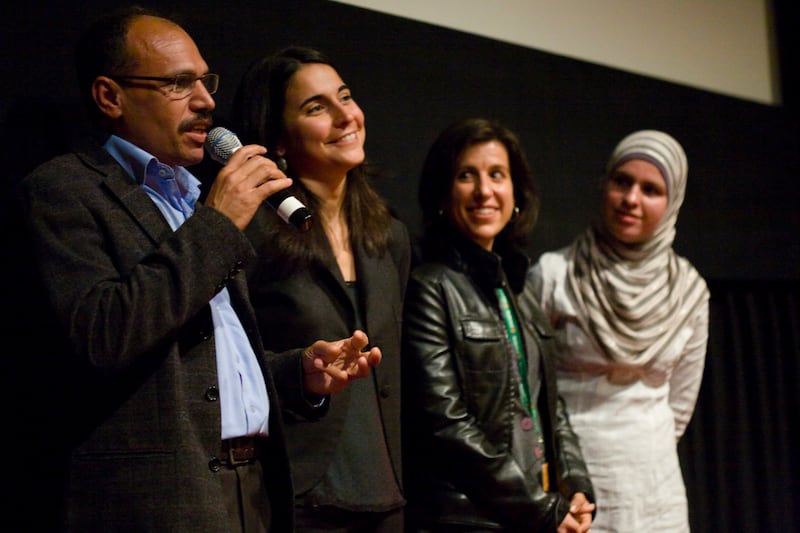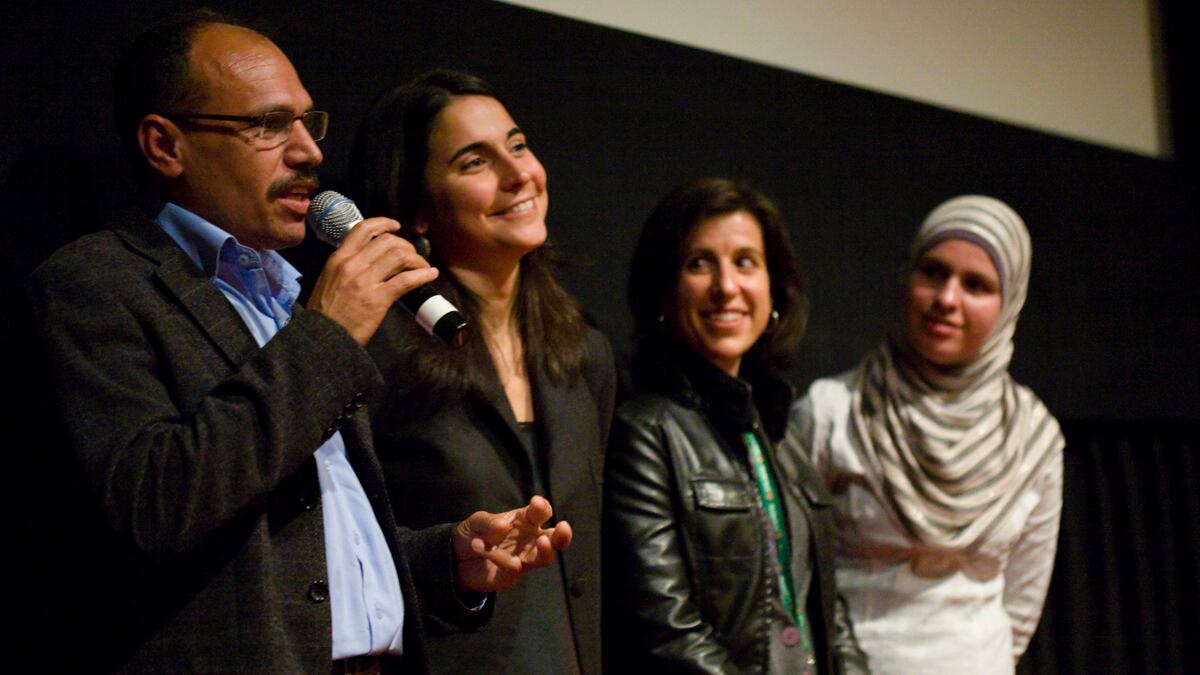Documentary filmmaking has its stars. The Michael Moores, the Morgan Spurlocks, the Ken Burnses—filmmakers who have the rare privilege of reaching millions of people with their releases just by attaching their names to a film and an issue. But in the modern era of moviemaking, a documentary doesn’t have to be Fahrenheit 9/11 to create real change.
That’s the idea behind the PUMA.Creative Impact Awards, an annual competition that awards €50,000—not to mention a publicity platform—to a recent documentary film that has made the most significant social or environmental impact. On Tuesday, this year’s prize went to Budrus, Brazilian filmmaker Julia Bacha’s profile of a Palestinian village fighting a unique battle. The film had already taken home honors at film festivals in Berlin, Jerusalem, San Francisco, Tribeca, and more, but, with this most recent honor, Bacha now has evidence that Budrus is actually inspiring change.
“I think it was really a story that people were very hungry for,” Bacha tells The Daily Beast. “Although, most didn’t even know they were.”
ADVERTISEMENT
Budrus was developed by Just Vision, an organization dedicated to granting power and legitimacy to Palestinians and Israelis using nonviolence to resolve the conflict. It is the story of a village of unlikely Davids going up against a notoriously obstinate governmental Goliath. It’s the remarkable depiction of Palestinians and Israelis, men and women, Fatah and Hamas uniting in one common cause: to stop the building of a wall through the Palestinian village of Budrus.
Roughly seven years ago, Palestinians and Israelis waged a bloody battle that became known as the second Intifada. As a security measure, Israel began building a security barrier—a barbed-wire-topped wall—to block terrorists from passing in and out of the West Bank. That wall cut straight through Budrus, cutting off villagers from their farmland and uprooting scores of ancient olive trees.
These trees have been passed down for generations, and they were being systematically destroyed. “The pain of that is just deep,” says Mira Nair, director of films including Salaam Bombay! and Monsoon Wedding, and a member of the Puma.Creative jury panel that also included actors and activists Djimon Hounsou and Danny Glover, writer and campaigner Jemima Khan, and executive director of Greenpeace International Kumi Nadoo. “Linking that pain to the much larger, eventual solution to the problem that is at the core of the war that is being fought in front of our eyes—that is the beauty of the film.”

The narrative of Budrus centers on activist Ayed Morrar, who exhaustively labors to stop the erection of the wall, but fails until he enlists the help of his intrepid 15-year-old daughter, Iltezam. Iltezam involves the women of the village, drafting them into nonviolent resistance by charging them to stand in front of the bulldozers. Israelis come into the village and risk their lives side by side with the Palestinians, all with the aim of stopping the wall.
They succeed.
“I think seeing those moments of unity gave audiences a sense of hope, that maybe in this microcosm of this village, there was an example of potentially something that could finally be taken out of this conflict and used for good,” Bacha, who also serves as creative director of Just Vision, says.
The people of Budrus are proof that peaceful resistance can still accomplish as much as—if not more than—violent protests. And Budrus is proof that a documentary, even one that’s not released widely in movie theaters across America, can make a real, legitimate difference.
Following the film’s release, New York Times columnist Nicholas Kristof traveled to the West Bank village of Bilin, where the nonviolent movement employed in Budrus had spread. In his profile of Bilin’s efforts, he credited Bacha’s film as “a riveting window into what might be possible if Palestinians adopted civil disobedience on a huge scale.” His Times colleague Ethan Bronner chronicled how Budrus was being screened in villages across the West Bank to encourage Palestinians to adopt methods of nonviolence. The film’s impact was explored in The Economist, The Nation, and Newsweek as well.
“The barriers and cynicisms that you usually see around this issue kind of melted with the story of that village,” Bacha says. “I think that’s the power of storytelling. And that’s the power of documentary.”
That power is becoming increasingly vital—and increasingly difficult to achieve. It’s easy to see how a documentary like Budrus can instantly create an impact once it reaches the right people. But in the age of Transformers and Twilight, how do you get eyes on these films? And, more importantly, with so much of the world oppressed and afraid, how do you get subjects to tell their stories?
“It’s a big challenge to enter people’s worlds in a way that they trust you enough for us as an audience to feel the anguish and the pain and the love,” says Nair. “In Palestine, why would they talk to us? In Congo, why the hell would they talk to anyone?”
Empowerment, Glover ventures. “They have real fear, emotional fear, the fear for their public safety,” he says. “People who find themselves in the grip of something they don’t want to be in, feeling powerless, see that the chance to use the information they have empowers them and encourages them to fight through it.”
Earning that trust, however, is a credit to filmmakers like Bacha, and is why, says Nair, they must continue to be celebrated and funded. “They must have the patience, the love of humanity, and respect people in every aspect, so they allow themselves to be who they are in front of you, and then, in front of the camera.”
We live in an age when such films can have the reach they deserve, says Nair, whether through the Internet release or aggressive theatrical promotion. “From Bowling for Columbine on, there has been a real place—of course, it’s a struggle to get there—but there’s a place were you can almost go commercial with some of these films.”
Bacha is not as optimistic about those opportunities. “You can put a film online, but how do you get eyeballs on it?” she says. “Hopefully, I think, there will be more and more thought into how you guarantee documentaries do have a life when they go online.” Luckily, says Hounsou, the direction society is moving makes this the perfect time for that Wild West to be tamed. “Nowadays, we have so very little time to read books,” he says. “So the facets of getting information are documentaries. We’re learning about social justice through film.”
As for the Michael Moores, who have that commercial release, that vital reach is all but guaranteed. They’re not oblivious to the necessity of films like Budrus, films that create change, finding an audience, too.
When Budrus first started screening in 2009 and 2010, Moore called it “one of the best documentaries I’ve seen this year.”
Bacha was flattered, but then carried on. Seizing on documentary filmmaking as a tool to build impact is “not just the responsibility of the mainstream,” she says. “It’s our responsibility as filmmakers to tell good stories as well. I take that responsibility very seriously.”





